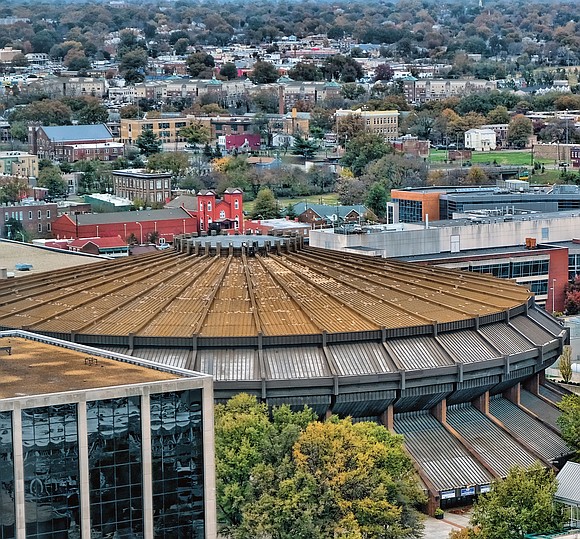City’s financial forecast projects deficits — even without a new Coliseum
Jeremy M. Lazarus | 2/22/2019, 6 a.m.
Prospects that Mayor Levar M. Stoney will advance his grand plan to replace the now closed Richmond Coliseum to City Council appear to be dimming.
Since November, the plan has remained in limbo, and City Hall remains mum on the plan’s future.
However, a new five-year financial forecast sent by the Stoney administration to City Council on Jan. 28 suggests that the city cannot afford to make construction of a new 17,500-seat arena its No. 1 priority.
That forecast projects that city operations expenditures would outstrip revenues by $8 million to $15 million a year beginning July 1 through the 2023-24 fiscal year that will end June 30, 2024.
For example, the forecast suggests the city would take in $720.4 million in revenue in fiscal 2019-20, but face expenditures of $735.5 million in that fiscal year, for a shortfall of $15.1 million
The forecast is based on the assumption that City Hall would provide a 1 percent annual pay increase for city employees and boost spending on public schools by $5 million a year, while also dealing with expected increases in debt costs and projected increases in benefit costs for City Hall employees, including retirement and health insurance.
The forecast did not include any assumptions of revenue and expenses involving the Coliseum plan. A consultant has indicated a new Coliseum could shift more than $19 million in increased real estate taxes away from the general fund in the first four fiscal years, 2019-20 to 2022-23, if it is approved.
If the forecast is accurate — and the city has undermined previous pessimistic five-year forecasts by finishing recent years with a 1 to 2 percent surplus of unspent dollars — it could make it difficult for City Council to approve a proposal that would strip away increases in real estate taxes from a major chunk of Downtown to repay Coliseum debt.
The new Coliseum plan that Mayor Stoney rolled out in November on behalf Dominion Energy’s top executive, Thomas F. “Tom” Farrell II, and Navy Hill Development, a group Mr. Farrell has assembled, calls for borrowing $350 million to build the new arena and to handle other public aspects of the project, such as redoing Leigh and Clay streets and renovating the vacant Blues Armory.
To repay that debt, the mayor indicated that the city would need to use increases in real estate taxes that would be generated in 80 blocks of Downtown, including a 10-block project area around the Coliseum and City Hall. That includes increases in real estate tax from existing buildings, as well as the taxes to be generated from new private development that Navy Hill Development is projecting for blocks near the Coliseum. Those new developments would include two hotels, two to three new office buildings, 25 new restaurants, new retail stores and nearly 3,000 new apartments.
According to projections from a Chicago-based consultant hired to review the Coliseum project, the city would shift $19 million in increased real estate taxes from the 80-block area to debt repayment in just the first four years, 2020 to 2023.
Under the mayor’s proposal, the current real estate taxes from the 80-block area would continue to flow into the general fund, but any increase in the amount of tax from rising property values or inflation would go into a special tax increment fund to be used to repay the Coliseum debt.
The debt, based on a 30-year repayment schedule, would cost more than $15 million a year at 4 percent interest rate, although the mayor’s plans calls for the debt to be paid off in 18 years by accelerating the repayment.
The consultant, Hunden & Associates, stated that the 80-block area generated $20.4 million in real estate taxes in 2018.
If the Coliseum plan were approved, Hunden projects property tax increases in those 80 blocks each year for the special fund.
For example, in the 2022-23 fiscal year, Hunden projects that the 80 blocks would generate about $29 million in real estate taxes. Of that, about $10 million would need to be shifted into the special fund to repay the debt and would not be available for general fund purposes, such as paying for police and fire services, repaving streets and running parks and recreation programs.
The $10 million estimate includes projected real estate taxes that Dominion Energy would pay on the office tower that is being developed on Canal Street and possibly on a second office tower that the company is proposing to build after the first one is complete.







